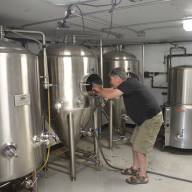Dr. Erika Bruner of Heart of Vermont Veterinary Housecalls, began doing end-of-life home visits in 2017. Bruner said that there are several reasons why people choose to have a vet come to their home for euthanasia, rather than taking the pet to a veterinary clinic.
While many dogs enjoy a trip in the car, most cats emphatically do not. Sparing a cat (and some dogs) a ride to the vet takes that animal’s anxiety level down a bit. Secondly, some pets associate the vet’s office with pain or fear, ditto for the vet. Bruner can show up at the house, pet the dog and cats, get them comfortable and begin the process.
“It can be more peaceful at home even though vets do their best to make the clinical environment more comfortable with couches, candles and separate entrances and time constraints. When I come to your house people can have as much time as they need and can be anywhere in the home with their pet. If they want to bury their pet at home, they can be prepared for that before I arrive,” Bruner explained.
Bruner can also take pets to be cremated or people can take their pet to their own vet to be cremated.
Home euthanasia is not for everyone, she pointed out. Some people do not want to have the association or memory of their pet dying at their house.
For those who do chose an at-home crossing of the Rainbow Bridge, Bruner explained how it works. People call for a consultation and Bruner talks to them, answering their questions about the process, cost, and options.
“Often, people are struggling with ‘is it time?’ and sometimes I come and spend time with them to see what’s going on with pet. We talk about options and decisions and timing,” Bruner said.
If/when people are ready they make an appointment with Bruner to come to their home. People chose where they want to be in their homes with their pets and after answering any final questions, Bruner begins the two-part process.
“Sedation is given first to make sure the pet is not aware of anything. That’s an injection in a muscle in the back leg. That lets them get peacefully to the point of non-awareness. This is a period of five to 10 minutes when they become more and more relaxed and the sting of the injection fades. This is surgery level of sedation,” Bruner said.
At that point, Bruner makes sure the pet is deeply sedated and prepares the second injection which is basically an overdose of the anesthetic. It stops an animal’s brain activity first and breathing stops and then a few minutes later the heart stops. She waits a few more minutes and listens to the heart again.
“People vary in terms of how much time they want it to take. Some people, having made the decision, want to rush through it and some want to slow it down. Often once the pet is sedated, people want a little extra private time with their pet, so I will go outside and walk around until they’re ready for me to come back,” she said.
When people are having her handle taking the pet for cremation, she also gives them as much time as they want before she wraps the pet and takes it to her car.
“Some want five to 10 minutes, some want more. It’s a huge thing and people should have the time that feels right to them,” Bruner pointed out.
Bruner worked for 11 years at Onion River Animal Hospital, leaving in 2013 to start a solo house call practice offering general medicine, wellness visits and home euthanasia. In 2017 Bruner became certified in animal acupuncture and added that to her practice, although she is now phasing that out.
For more information about her practice, visit: https://heartofvermontvet.com/
You might also like













